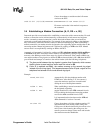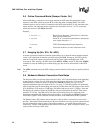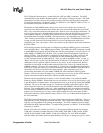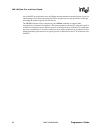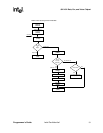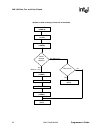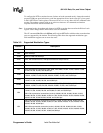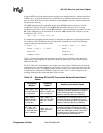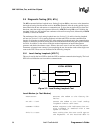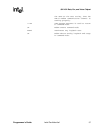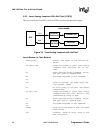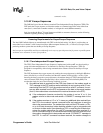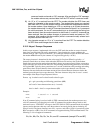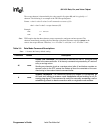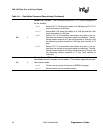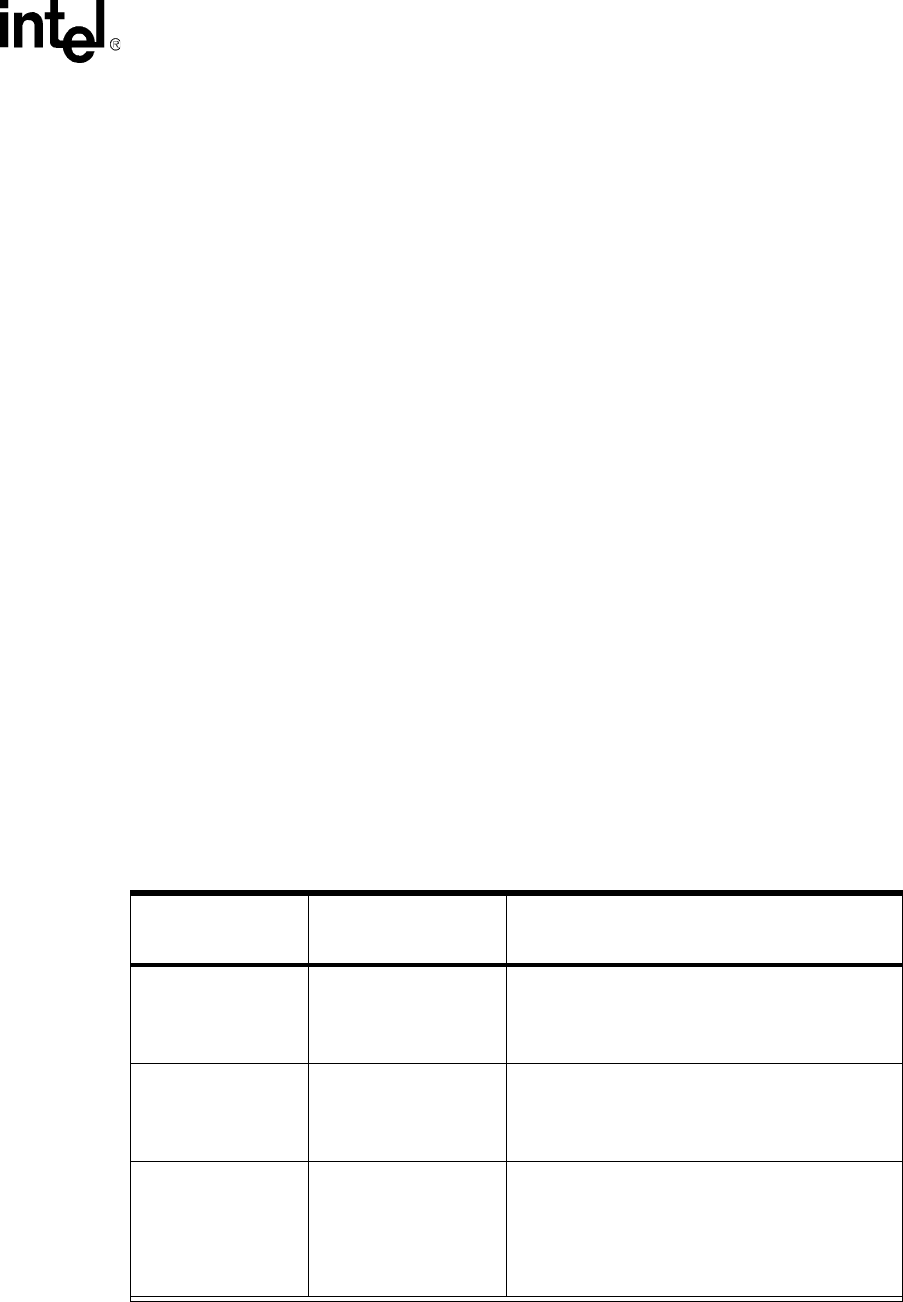
56K V.92 Data, Fax, and Voice Chipset
Programmer’s Guide Intel Confidential 35
S-register S37 specifies the maximum data rate that can be attempted during a modem connection.
If S37 is set to ‘0’, then the modem looks at the DTE rate to determine the maximum connection
data rate. If the DTE data rate doesn’t match one of the <carrier> data rates, then the modem uses
the next-fastest data rate.
The +MS command sets the modulation speeds in the MD566X chipsets; however, to set the
modulation to either V.22 or Bell 212, the B0 or B1 command also must be sent. To set the
modulation type to ITU-T V.22, send the B0 command; to set the modulation type to Bell 212, send
B1. These commands can be entered before or after the +MS command. For example, to set the
modulation to ITU-T V.22:
+MS = V22, 1, 1200, 1200; B0
It is important to remember that the ordering of commands is important in configuring the modem.
For example, if the DTE 9600 bps data rate and the AT commands are issued in the following
sequence, different connection rates result:
1. ATS37 = 0 2. AT+MS = V32B, 1, 0, 14400
AT+MS = V32B, 1, 0, 14400 ATS37 = 0
ATDT1234 ATDT1234
CONNECT 14400 CONNECT 9600
Table 3-3 shows the resulting connection data rate when using non-default values. Because of
impairments on the telephone line, the actual connection speeds may be lower than the speeds
defined in this table.
For V.92, V.90 and V.34 modulations, the modem can receive data at a different data rate than the
transmit data rate. All other modulation types besides V.23 and V.34 use the same data rate for the
transmitter and receiver. Use ATW3 to see the modem’s actual receive and transmit data rates (the
modem must be configured for ATV1 text response codes). Table 3-3 shows examples of the
resulting connection rate when non-default values are used.
Table 3-3. Resulting DCE-to-DCE Connection Rates with Non-Default
Values
Originating
Modem
Answering
Modem
Resulting Connection Speed
+MS = V34, 1, 0, 0;
the UART data rate
= 115,200 bps
+MS = V32, 1, 0,
9600; the UART data
rate = 14,400 bps
9600 bps: the originating modem is configured
to attempt a maximum 28,800-bps connection,
but the answering modem is configured to
attempt a maximum data rate of 9600 bps.
+MS = V34, 0,
28,800, 28,800;
UART data rate =
115,200 bps
+MS = V32B, 1, 0,
9600; B1 and UART
data rate = 14,400
bps
No connection: the originating modem is con-
figured to attempt only a 28,800 bps connec-
tion, but the answering modem is configured to
attempt a maximum data rate of 9600 bps.
N0, +MS = V32,
1, 0, 9600; S37 =
0; and UART data
rate = 7200 bps
+MS = V34, 1, 0,0;
UART data rate =
9600 bps
7200 bps: the originating modem is configured
to attempt connection at 7200 bps or below.
The answering modem is configured to attempt
a data rate of 9600 bps or below. The connec-
tion takes place at 7200 bps, the highest
speed supported by both modems.



